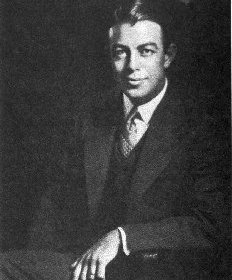Related Research Articles

Benjamin Lee Whorf was an American linguist and fire prevention engineer best known for proposing the Sapir–Whorf hypothesis. He believed that the structures of different languages shape how their speakers perceive and conceptualize the world. Whorf saw this idea, named after him and his mentor Edward Sapir, as having implications similar to those of Einstein's principle of physical relativity. However, the concept originated from 19th-century philosophy and thinkers like Wilhelm von Humboldt and Wilhelm Wundt.

Cognitive science is the interdisciplinary, scientific study of the mind and its processes. It examines the nature, the tasks, and the functions of cognition. Mental faculties of concern to cognitive scientists include perception, memory, attention, reasoning, language, and emotion; to understand these faculties, cognitive scientists borrow from fields such as psychology, artificial intelligence, philosophy, neuroscience, linguistics and anthropology. The typical analysis of cognitive science spans many levels of organization, from learning and decision-making to logic and planning; from neural circuitry to modular brain organization. One of the fundamental concepts of cognitive science is that "thinking can best be understood in terms of representational structures in the mind and computational procedures that operate on those structures."
The following outline is provided as an overview and topical guide to linguistics:
Linguistic relativity asserts that language influences worldview or cognition. One form of linguistic relativity, linguistic determinism, regards peoples' languages as determining and influencing the scope of cultural perceptions of their surrounding world.

George Philip Lakoff is an American cognitive linguist and philosopher, best known for his thesis that people's lives are significantly influenced by the conceptual metaphors they use to explain complex phenomena.
In cognitive linguistics, conceptual metaphor, or cognitive metaphor, refers to the understanding of one idea, or conceptual domain, in terms of another. An example of this is the understanding of quantity in terms of directionality or the understanding of time in terms of money.
Cognitive linguistics is an interdisciplinary branch of linguistics, combining knowledge and research from cognitive science, cognitive psychology, neuropsychology and linguistics. Models and theoretical accounts of cognitive linguistics are considered as psychologically real, and research in cognitive linguistics aims to help understand cognition in general and is seen as a road into the human mind.
Cognitive science is the scientific study either of mind or of intelligence . Practically every formal introduction to cognitive science stresses that it is a highly interdisciplinary research area in which psychology, neuroscience, linguistics, philosophy, computer science, anthropology, and biology are its principal specialized or applied branches. Therefore, we may distinguish cognitive studies of either human or animal brains, the mind and the brain.

An image schema is a recurring structure within our cognitive processes which establishes patterns of understanding and reasoning. As an understudy to embodied cognition, image schemas are formed from our bodily interactions, from linguistic experience, and from historical context. The term is introduced in Mark Johnson's book The Body in the Mind; in case study 2 of George Lakoff's Women, Fire and Dangerous Things: and further explained by Todd Oakley in The Oxford handbook of cognitive linguistics; by Rudolf Arnheim in Visual Thinking; by the collection From Perception to Meaning: Image Schemas in Cognitive Linguistics edited by Beate Hampe and Joseph E. Grady.
The study of how language influences thought, and vice-versa, has a long history in a variety of fields. There are two bodies of thought forming around this debate. One body of thought stems from linguistics and is known as the Sapir–Whorf hypothesis. There is a strong and a weak version of the hypothesis which argue for more or less influence of language on thought. The strong version, linguistic determinism, argues that without language there is and can be no thought, while the weak version, linguistic relativity, supports the idea that there are some influences from language on thought. And on the opposing side, there are 'language of thought' theories (LOTH) which believe that public language is inessential to private thought. LOTH theories address the debate of whether thought is possible without language which is related to the question of whether language evolved for thought. These ideas are difficult to study because it proves challenging to parse the effects of culture versus thought versus language in all academic fields.
Prototype theory is a theory of categorization in cognitive science, particularly in psychology and cognitive linguistics, in which there is a graded degree of belonging to a conceptual category, and some members are more central than others. It emerged in 1971 with the work of psychologist Eleanor Rosch, and it has been described as a "Copernican Revolution" in the theory of categorization for its departure from the traditional Aristotelian categories. It has been criticized by those that still endorse the traditional theory of categories, like linguist Eugenio Coseriu and other proponents of the structural semantics paradigm.
Construction grammar is a family of theories within the field of cognitive linguistics which posit that constructions, or learned pairings of linguistic patterns with meanings, are the fundamental building blocks of human language. Constructions include words, morphemes, fixed expressions and idioms, and abstract grammatical rules such as the passive voice or the ditransitive. Any linguistic pattern is considered to be a construction as long as some aspect of its form or its meaning cannot be predicted from its component parts, or from other constructions that are recognized to exist. In construction grammar, every utterance is understood to be a combination of multiple different constructions, which together specify its precise meaning and form.
Robin Tolmach Lakoff is a professor emerita of linguistics at the University of California, Berkeley. Her 1975 book Language and Woman's Place is often credited for making language and gender a major debate in linguistics and other disciplines.
Cognitive semantics is part of the cognitive linguistics movement. Semantics is the study of linguistic meaning. Cognitive semantics holds that language is part of a more general human cognitive ability, and can therefore only describe the world as people conceive of it. It is implicit that different linguistic communities conceive of simple things and processes in the world differently, not necessarily some difference between a person's conceptual world and the real world.
Generative semantics was a research program in theoretical linguistics which held that syntactic structures are computed on the basis of meanings rather than the other way around. Generative semantics developed out of transformational generative grammar in the mid-1960s, but stood in opposition to it. The period in which the two research programs coexisted was marked by intense and often personal clashes now known as the linguistics wars. Its proponents included Haj Ross, Paul Postal, James McCawley, and George Lakoff, who dubbed themselves "The Four Horsemen of the Apocalypse".

Dan Sperber is a French social and cognitive scientist, anthropologist and philosopher. His most influential work has been in the fields of cognitive anthropology, linguistic pragmatics, psychology of reasoning, and philosophy of the social sciences. He has developed: an approach to cultural evolution known as the epidemiology of representations or cultural attraction theory as part of a naturalistic reconceptualization of the social; relevance theory; the argumentative theory of reasoning. Sperber formerly Directeur de Recherche at the Centre National de la Recherche Scientifique is Professor in the Departments of Cognitive Science and of Philosophy at the Central European University in Budapest.
Psychological anthropology is an interdisciplinary subfield of anthropology that studies the interaction of cultural and mental processes. This subfield tends to focus on ways in which humans' development and enculturation within a particular cultural group—with its own history, language, practices, and conceptual categories—shape processes of human cognition, emotion, perception, motivation, and mental health. It also examines how the understanding of cognition, emotion, motivation, and similar psychological processes inform or constrain our models of cultural and social processes. Each school within psychological anthropology has its own approach.
Cognitive anthropology is an approach within cultural anthropology and biological anthropology in which scholars seek to explain patterns of shared knowledge, cultural innovation, and transmission over time and space using the methods and theories of the cognitive sciences often through close collaboration with historians, ethnographers, archaeologists, linguists, musicologists, and other specialists engaged in the description and interpretation of cultural forms. Cognitive anthropology is concerned with what people from different groups know and how that implicit knowledge, in the sense of what they think subconsciously, changes the way people perceive and relate to the world around them.

In linguistics, the term formalism is used in a variety of meanings which relate to formal linguistics in different ways. In common usage, it is merely synonymous with a grammatical model or a syntactic model: a method for analyzing sentence structures. Such formalisms include different methodologies of generative grammar which are especially designed to produce grammatically correct strings of words; or the likes of Functional Discourse Grammar which builds on predicate logic.
Theory of language is a topic in philosophy of language and theoretical linguistics. It has the goal of answering the questions "What is language?"; "Why do languages have the properties they do?"; or "What is the origin of language?". In addition to these fundamental questions, the theory of language also seeks to understand how language is acquired and used by individuals and communities. This involves investigating the cognitive and neural processes involved in language processing and production, as well as the social and cultural factors that shape linguistic behavior.
References
- ↑ Hollan, Douglas (2000). "Constructivist Models of Mind, Contemporary Psychoanalysis, and the Development of Culture Theory". American Anthropologist. 102 (3): 538–550, See p. 541. doi:10.1525/aa.2000.102.3.538.
- ↑ Levy, Robert I. (1975). Tahitians: mind and experience in the Society Islands (Pbk. ed.). Chicago: University of Chicago Press. p. 324. ISBN 978-0226476070.
- ↑ Shweder, Richard A., ed. (1995). Culture theory: essays on mind, self, and emotion. Cambridge University Press. pp. 227–8. ISBN 978-0521318310.
- ↑ Ottenheimer, Harriet Joseph (2009). The anthropology of language: an introduction to linguistic anthropology (2nd ed.). Belmont, CA: Wadsworth. p. 41. ISBN 978-0495508847.
- ↑ Ferrara, Nadia (1998). Emotional expression among Cree Indians: the role of pictorial representations in the assessment of psychological mindedness. London: Jessica Kingsley. p. 38. ISBN 978-1853026560.
- ↑ Lakoff, George (2004). Don't think of an elephant!: know your values and frame the debate: the essential guide for progressives . White River Junction VT: Chelsea Green. p. 24. ISBN 978-1931498715.
- ↑ Mariotto, A. (2010). "Hypocognition and evidence-based medicine". Internal Medicine Journal. 40 (1): 80–82. doi:10.1111/j.1445-5994.2009.02086.x. PMID 20561370. S2CID 24519238.
- ↑ Wu, Kaidi; Dunning, David (9 August 2018). "Unknown Unknowns: The Problem of Hypocognition". Scientific American . Retrieved 12 August 2018.
- ↑ Wu, Kaidi; Dunning, David (2018). "Hypocognition: Making sense of the landscape beyond one's conceptual reach". Review of General Psychology. 22 (1): 22–25. doi:10.1037/gpr0000126.